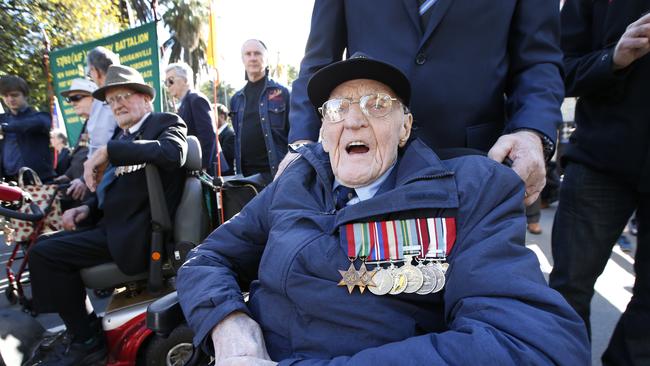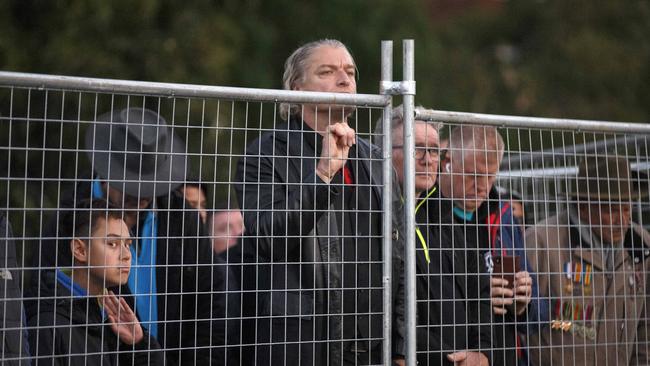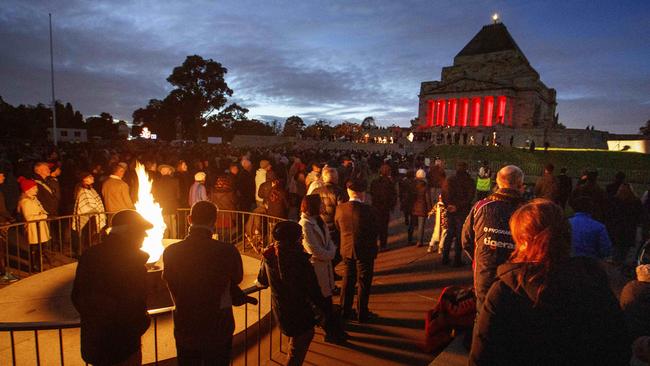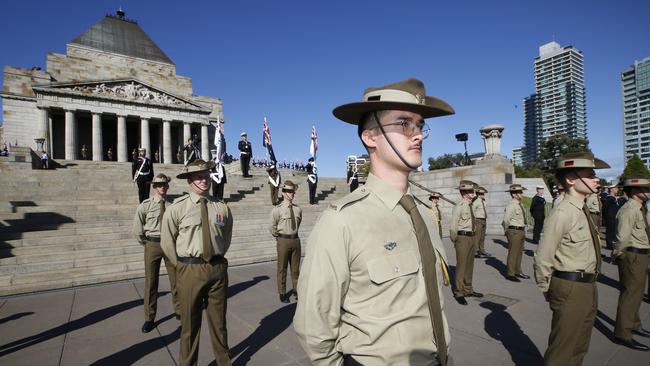Patrick Carlyon: How Anzac Day was different this year
No rustle of parkas, and just a few kids with their parents in the chill. And one sight was almost as powerful as the lone piper.

Patrick Carlyon
Don't miss out on the headlines from Patrick Carlyon. Followed categories will be added to My News.
Some things never change. Until COVID, that is.
Sunday’s Dawn Service was different. It had to be.
The ceremony, a timeless given, is typically difficult to distinguish from one year to the next. Tradition dictates: short, simple and, best of all, no politicians allowed near a microphone.
It’s always been an invitation for the imagination to wander, from a Turkish beach to a chopper in flames, in collective thanks to those Australians who put their nation ahead of themselves.
On Sunday, however, Victorians did not stream the parklands for a good perch in the silent throng.
There was no roar of coaches, lined end to end on end on Birdwood Ave, the air heavy with fumes. There was no rustle of parkas rubbing parkas.
Few kids, typically a service feature, clung to their parents in the chill. Instead, they were tucked up in bed, or standing with a candle at the top of the driveway.

Sunday’s turnout was one of the smallest crowds for a generation or more, about one-sixtieth of the record numbers set only six years ago.
Many there felt that it didn’t need to be so restricted.
Temporary fencing lined the shrine’s forecourt area. The fencing was ringed with people who missed out on the 1400 available tickets due to COVID-controls. Elsewhere, such as Canberra and Townsville, far more people gathered to attend services.
The sight outside the fence was almost as powerful as a lone piper playing on the shrine roof.
There appeared to be far more people outside the fence than in. No one told them to come along. Indeed, they were actively discouraged. They knew they wouldn’t get in.
Their presence goes to the wonder of this ritual, which is as Melbourne as the grand final or the Melbourne Cup.
You go because you are drawn, not because it is confected as a gala event or as a place to be seen.
That so many people tried and failed to be included, a kind of us and them separation of haves and have-nots, seemed to conflict with egalitarian streaks that are supposed to bind the Anzac Day commemoration.
More personnel, police and medical, milled more heavily than service goers. A huddle gathered around the eternal flame, as if the people sought to warm themselves, while the rest hunkered in front of the shrine, as if they had arrived hours too early for a bigger rally.
They heard about “the footsteps of Anzacs” and “the echoes … of the fog of war”. Particular attention focused on the siege of Tobruk, which was 80 years ago.
Tobruk veterans live among us still, survivors of an eight-month stand-off in fleas, rats, flies and constant bombings. They heard that their gallant efforts compared with the Gallipoli folklore.
Governor Linda Dessau quoted Vera Deakin, the daughter of Prime Minister Alfred Deakin. Writing from Red Cross Station in Cairo on the first anniversary of Gallipoli, she described how “half the world was plunged into admiration and awe and half our continent into sorrow and mourning”.

Military surgeon Major-General Jeffrey Rosenfeld credited the prisoner doctors of the World War II Japanese camps for saving lives without supplies or equipment.
In nodding to the centenary of the air force, he read from a farewell letter of a flight officer lost over Germany, among the one in three Australians who flew in bomber command in World War II and did not come home.
Numbers at the march later in the morning were, well, thin. Elderly marchers were scared off by the health threat, and only a fraction of 8000 march registrations were applied for.
Representatives of battalions, tracing to Gallipoli, who ordinarily march every year chose not to attend.
David Bartlett was there for his grandfather Bertrand Bartlett, who survived war and lived to 93. Zoe, 10 and Abbey, 13, have attended every march, on foot or in their father’s arms, since they were one.
“I didn’t think it was going to happen,” David said of this year’s march.
Rosslyn Hamilton held the banner for the 57th battalion. Her great grandfather, Clarence Prew, a father of three, was killed in the opening hours of the Battle of Polygon Wood in 1917.

Alongside her on Anzac Day was her husband, Stephen, who is related to James Martin, the youngest Anzac to die at Gallipoli at 14 years and nine months.
Mrs Hamilton said she would have marched even if it was not allowed. Her family suffered severe loss in war; one of her great uncles came home without a leg.
It was about respect and recognition, she said, for men like her great grandfather who died without a grave on the other side of the world.
She wasn’t angry, she stressed, but saddened by controls which allowed full sporting stadiums but discouraged thousands from paying respect to their ancestors.
Mrs Hamilton expressed a wider view.
“It should be about what we can do, not what we can’t,” she said.
“We gave our pledge to our forebears that we will always honour their sacrifice. This is a sacred day.
“To shove the march around as they’ve done, and allow 85,000 to go to the MCG, and to reduce the march so that it’s all about reducing it rather than remembrance, is so disrespectful to the sacrifice of our soldiers.”



